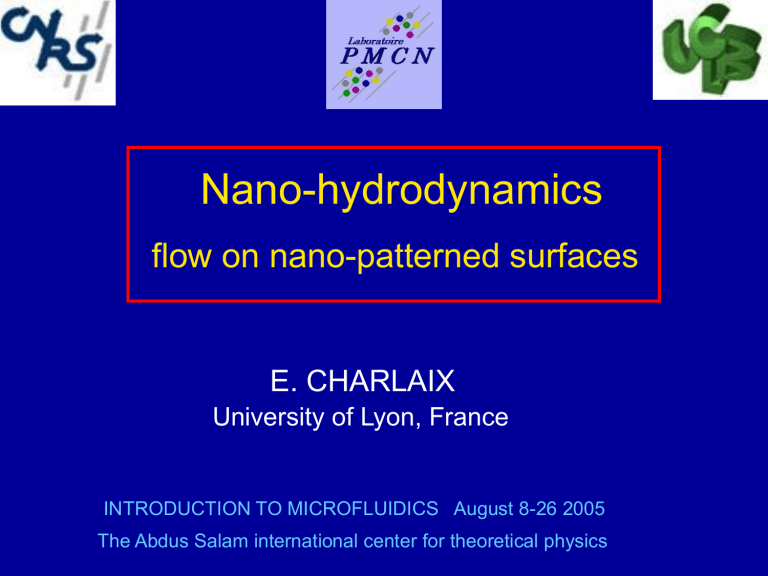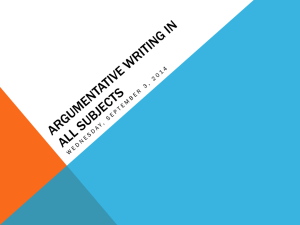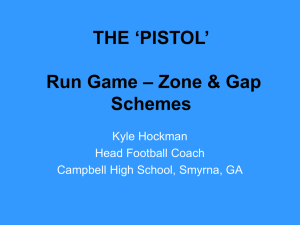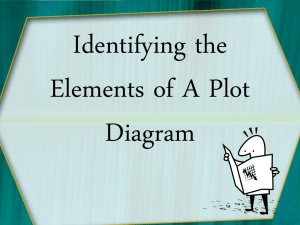Charlaix4

Nano-hydrodynamics
flow on nano-patterned surfaces
E. CHARLAIX
University of Lyon, France
INTRODUCTION TO MICROFLUIDICS August 8-26 2005
The Abdus Salam international center for theoretical physics
OUTLINE
Roughness and wetting : a conspiracy ?
Super- hydrophobic effect
Flow on patterned surfaces
Theory, MD simulations, and a number of experimental result: intrinsic slip lengths on smooth surface are at most of the order of 10-20 nm
Hydrodynamic calculations: roughness kills slip
Why are so large slip length sometimes found ?
Roughness and wetting : a conspiracy ?
Hydrodynamic calculations : roughness decreases slip.
On non-wetting surfaces, can roughness increase slip ?
Watanabee et al J.F.M.1999
Rough surface with water-repellent coating
Contact angle 150 °
Very large slip effects (200 µm )
Drag reduction in high Re flows
100µm
20µm
Treteway -Meinhart, Phys. of Fluids, 2004
PIV in hydrophilic capillaries :
Poiseuille flow, no-slip
30 µm
300 µm
PIV OTS coated capillaries
Average slip 200 à 900 nm
Heterogeneous
Slip disappears under applied hydrostatic pressure
Bico, Marzolin
& Quéré
Europhys. Lett 47, 220 (1999)
« Fakir » effect or
Super-hydrophobicity
BASICS OF WETTING g
SL g
SV
: solid-liquid surface tension
: solid-liquid surface tension g
LV
: solid-liquid surface tension g
LV g
SV g
SL equilibrium contact angle :
Young Dupré relation g
SV g
SL
= g
LV cos q partially wetting liquid : q < 90° non wetting liquid : q < 90° perfect wetting liquid : q =0°
WETTING OF A ROUGH SURFACE
Young’s law on rough surface:
Wenzel law q o : contact angle on flat chemically same surface
1
-
-1 1 q
-1
2a
WETTING OF A PATTERNED SURFACE h
Wenzel law: q
?
Composite wetting
COMPOSITE WETTING
Bico, Marzolin & Quéré
Europhys. Lett 47, 220 (1999)
Composite wetting is favorable if
-
-1
Super- hydrophobic region
Liquid must be non-wetting
Wenzel law
-1
q
CONTACT ANGLE IN COMPOSITE WETTING
Youngs law for composite wetting
Super- hydrophobic state
-1
Wenzel state
-1
Bico, Marzolin & Quéré
Europhys. Lett 47, 220 (1999)
METASTABILITY EFFECT IN COMPOSITE WETTING
∆P q
System such that prepared in SH state d
State is metastable up to
-1 eq. state
Metastable SH state can be obtained on rough surface as soon as q o
< 90 °.
The smallest the scale the more robust is SH state
-1
METASTABILITY OF WETTING ON
MICROPATTERNED SURFACES
Lafuma & Quéré 2003
Nature Mat. 2, 457
Superhydrophobic state
Compression of a water drop between two identical microtextured hydrophobic surfaces. The contact angle is measured as a function of the imposed pressure.
Wenzel state
Lafuma & Quéré 2003
Nature Mat. 2, 457
Contact angle after separating the plates
Superhydrophobic state
Wenzel state
Maximum pressure applied
METASTABILITY EFFECT IN COMPOSITE WETTING q
-1
Super- hydrophobic region
Need to nucleate a bubble to recover
SH state.
lower pressure in liquid, heat…
The largest the scale the more difficult.
eq. state
-1
Non-wetting nano-textured surfaces : MD simulations
Cottin-Bizonne & al 2003 Nature Mat 2, 237
1 µm
Lennard-Jones fluid
= {liquid,solid},
: energy scale
: molecular diameter c
b
: wetting control parameter
Non-wetting situation : c
Ls
= 0,5 : q o
=140 °
N : nb of molecule in the cell
Wetting state as a function of applied pressure
C
b = 0.5 q
= 140 °
N is constant
Volume
Imbibated (Wenzel) state Super-hydrophobic state
Wetting transition under applied pressure
Super-hydrophobic state Imbibated (Wenzel) state
Gibbs energy at applied pressure P (neglecting pressure in vapor phase)
Super-hydrophobic state is stable if
Super-hydrophobic transition at zero pressure
For a given material and texture shape, super-hydrophobic state is favored if scale is small
Wetting state as a function of applied pressure
Imbibated (Wenzel) state
Volume
Super-hydrophobic state
Shear Flow
Measure velocity profile as a function of z
V bas
V haut
Flow on the textured surface : imbibated state
- on the smooth surface : slip = 22
- on the imbibated rough surface : slip = 2
Roughness decreases slip
Flow on the textured surface : superhydrophobic state
- on the smooth surface : slip = 24
- on the super-hydrophobic surface : slip = 57
Roughness increases slip
Influence of pressure on the boundary slip
Barentin et al EPJ E 2005
150
Superhydrophobic state
100 d
P cap
=
-2 g lv cos q d
50
Imbibated state
0
0 1 2 3
P/P cap
The boundary condition depends highly on pressure.
Low friction flow is obtained under a critical pressure, which is the transition
Pressure to obtain the super-hydrophobic state
OUTLINE
Roughness and wetting : a conspiracy ?
Super- hydrophobic effect
Flow on patterned surfaces
Apparent bc on a patterned surface: macroscopic calculation
Surface with non-uniform local bc
y
Local slip length : b(x,y)
Independant of shear rate x
What is the apparent bc far from the surface ?
Effective slip on a patterned surface : macroscopic calculation
Local slip length : b(x,y) Shear applied at z =
Bulk flow : Stokes equations Analytic calculation of apparent slip
Apparent slip length does not depend on shear rate
flow
Stripes of perfect slip and no-slip h.b.c.
Effective slip length
Stripes parallel to the shear
(Philip 1972) analytical calculation
The length scale for slip is the texture scale
Even with parallel stripes of perfect slip, effective slip is weak:
B
//
= L for z
= 0.98
flow
Stripes of perfect slip and no-slip h.b.c.
Effective slip length
Stripes perpendicular to the shear (Stone and Lauga 2003)
LENGTH SCALE FOR THE EFFECTIVE SLIP
Velocity corrugation
Bulk equations
Boundary condition
2D Fourier transform
Velocity corrugations of wavelength 2π/q at solid surface decay exponentially in bulk with length scale L/2π
At z=L/2 the velocity field is smooth
WHAT ABOUT LOCAL PARTIAL SLIP CONDITIONS ?
Wenzel state
L b o
= 0 fraction area z b
1
≠ ∞
The smallest length (b
1
,L) determines the effective slip b
1
/L
WHAT ABOUT LOCAL PARTIAL SLIP CONDITIONS ?
Super-hydrophobic state b o
≠ 0 b
1
=
∞
The largest length (b o
,L) determines the effective slip b o
/L
AN APPROXIMATE MODEL z
Slip length heterogeneties induces flow corrugations which decay as exp(-z/L)
L x
Energy balance in a boundary layer of thickness L
Average shear rate in the layer
2 log B eff
0
-2
-4
-4 b
1
=
∞ b o
= 0
-2 log L 0
For high slip : b
1
=
∞
L large z as small as possible
2
Bimodal distribution b o
, fraction area z b
1
> b o
, fraction area 1z
Comparison of MD slip length with a macroscopic calculation on a flat surface with a periodic pattern of h.b.c.
More dissipation than macroscopic calculation because of the meniscus
AN EXPERIMENTAL REALISATION
Slip length
20µm
Hydrophobic silicon microposts
Weaker work pressure (0.03 bars) allows very large values of B
CONCLUSION
Roughness + hydrophobicity can induce large slip effects due to composite wetting (gaz/vapor at the liquid-solid interface)
Large slip is obtained in the super-hydrophobic state
Relevant length scale for slip length is texture wavelength
Large slip requires few liquid-solid contact (thin pillars texture)
Pressure effects are important.
Applied pressure can cause transition toward sticky imbibated(Wenzel) state
Patterning surfaces for large slip effects needs texture optimization with competing effects :
Increasing L increases slip but decreases robustness of Super-Hydrophobic state
Nanotube forest






